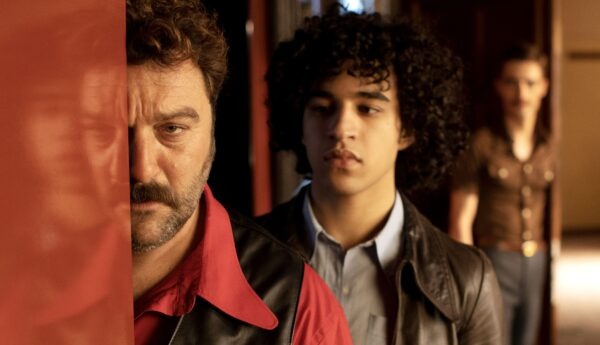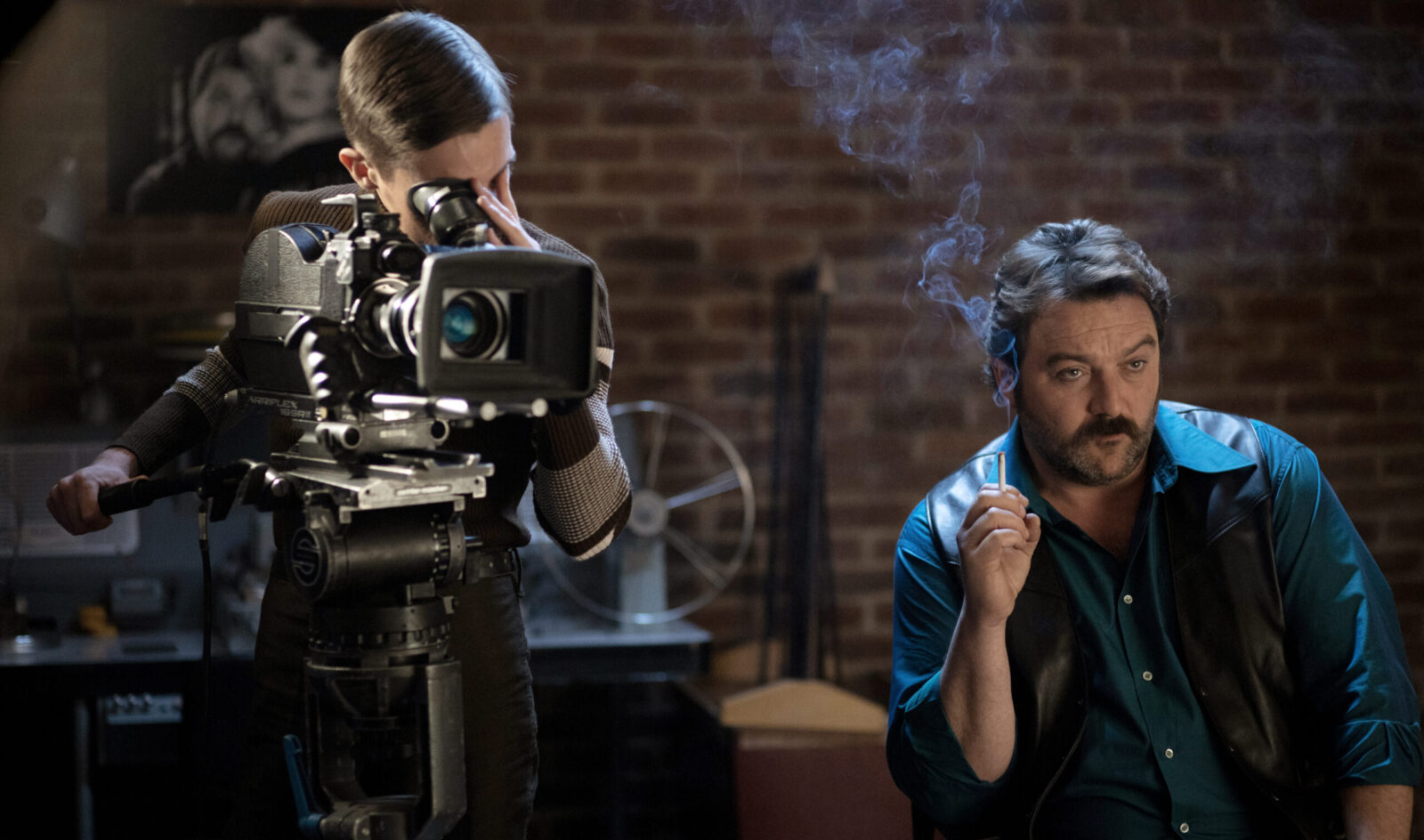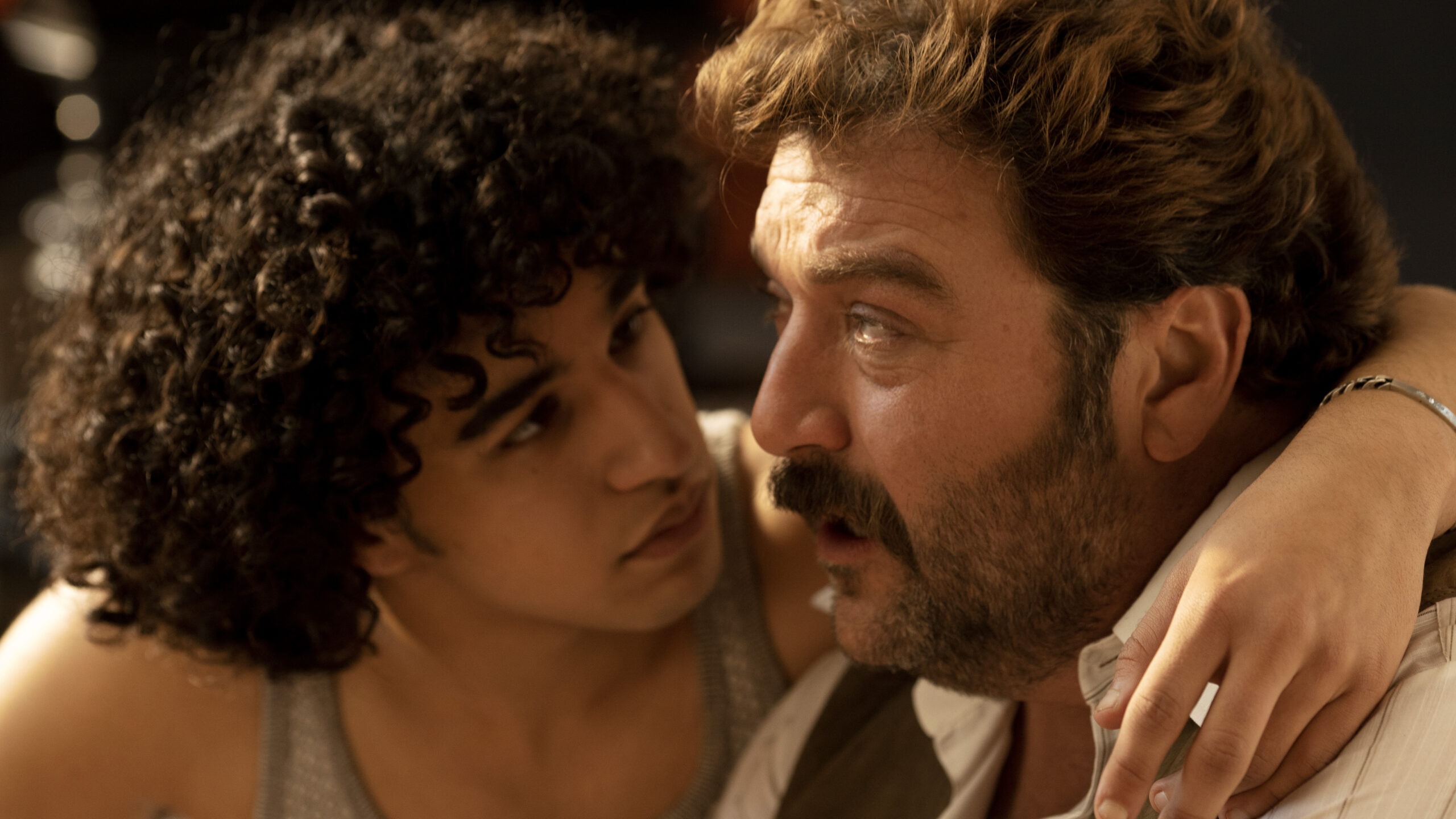
IS THE VICTIM AND VICTIMIZER AN ENDEMIC DUALITY IN THE HUMAN CONDITION?
The film is a free adaptation of Rainer Werner Fassbinder´s The Bitter Tears of Petra von Kant, a play and a movie that refer to power relations in a triangular situation between women, and gave its director the international recognition he deserved in his short and prolific career. Francois Ozon makes a turn from the all-female cast into men for the three main characters Peter (Denis Ménochet), silent scene stealer Karl (Stefan Crepon), and Amir (Khalil Ben Gharbia), Isabelle Adjani, and Hanna Schygulla herself were also asked to join and graced the production.
At first, we watch a close-up in red of unmissable RW Fassbinder eyes and reading glasses. The story takes place in Cologne, Germany, there is a courtyard surrounded by buildings with french windows and curtains that allow or not to see outside; through this open area, the seasons pass by.
 The year is 1972, Karl opens the bedroom curtains where Peter awakes wrapped in mauve sheets. Peter is a film director, he has the urge to send a letter to Romy Schneider calling her to collaborate on a new film and asks Karl to type it. The relationship between Peter and Karl is a vicious one based on factors of dominance and submission.
The year is 1972, Karl opens the bedroom curtains where Peter awakes wrapped in mauve sheets. Peter is a film director, he has the urge to send a letter to Romy Schneider calling her to collaborate on a new film and asks Karl to type it. The relationship between Peter and Karl is a vicious one based on factors of dominance and submission.
Ozon makes Peter the alter ego of Fassbinder, and we see the german director clearly on the screen in the blue tone scene by the end. The movie is a free adaptation of the female version, that plays constantly with mirrors (literally) and reflections from the original film.
 In the play and in the movies, the so-called love is a substitute term for possession, as the main character expresses: Everyone is disposable. There are obsessions and compulsions all around, even from the Ozon side, for instance, the musical theme and song “Each Man Kills the Thing He Loves” that Sidonie (Isabelle Adjani) sings, was also a favorite of Fassbinder since he included it in Querelle sung by non-other than Jeanne Moreau. From the Fassbinder legacy and concerns, we also learn about manipulation, violence, sordid details that procured bitter tears, human relations, desires and needs, ambition, humility, social diversity, and that the most beautiful things are fleeting.
In the play and in the movies, the so-called love is a substitute term for possession, as the main character expresses: Everyone is disposable. There are obsessions and compulsions all around, even from the Ozon side, for instance, the musical theme and song “Each Man Kills the Thing He Loves” that Sidonie (Isabelle Adjani) sings, was also a favorite of Fassbinder since he included it in Querelle sung by non-other than Jeanne Moreau. From the Fassbinder legacy and concerns, we also learn about manipulation, violence, sordid details that procured bitter tears, human relations, desires and needs, ambition, humility, social diversity, and that the most beautiful things are fleeting.
The action develops in Peter’s apartment, a claustrophobic setting between a bedroom and a living room with a view. There are mirrors and huge reproductions of the martyrdom of Saint Sebastian in paintings by Caravaggio, Rubens, and Toscano alternating with equally big portraits of Amir as the Saint, and a close-up of Sidonie´s face, providing the decorative background for the melodrama. Viewers may think of Bertolt Brecht and Douglas Sirk, of whom Fassbinder was an admirer. Ozon had that in mind too as well as the theatrical origins of the screenplay he adapted.
Hanna Schygulla (as Rosemarie von Kant) shows up late, she sings also, and shares her soothing presence conveniently. Her apparition and the mise- en- scéne is a homage to the German director by the french director Francois Ozon, merci beaucoup monsieur Ozon! The film invites us to revisit the original masterpiece that is available on YouTube, as well as the short Beautiful Destruction by Jane Shattuc, for further appreciation of the same.
Peter von Kant premiered and opened the 72nd edition of the Berlin Film Festival, and will open the Perlak at San Sebastian Festival´s 70th edition. It opens Friday, September 2 in New York (IFC Center), Los Angeles (Royal), San Francisco, Chicago and Seattle followed by additional markets
Review by José Mayorga , Guatemala, Central America lawyer and notary public, visual artist, and editor of
El Azar Cultural, lives and works in Guatemala City. Cinema lover, curious about the possibilities life brings and
eager to live the experience.

